|
Recently, we have taken a look at the Italian paired fingering that was suitable to play scale-like passages in the piece by Andrea Gabrieli. I have hinted that the systems of paired fingering were different from country to country. Today let's familiarize ourselves with the Spanish paired fingering as it was used in the 16th century.
Spanish music theorist, organist, and composer Tomas de Santa Maria (ca. 1510-1570) in his work "the Art of Playing Fantasia" (Arte de tañer fantasía, 1565) presented the following table: R.h.: C(2)-D(3)-E(2)-F(3)-G(2)-A(3)-B(2)-C(3)-B(2)-A(3)-G(2)-F(3)-E(2)-D(3)-C(2) L.h.: C(4)-D(3)-E(4)-F(3)-G(4)-A(3)-B(4)-C(3)-B(4)-A(3)-G(4)-F(3)-E(4)-D(3)-C(4) So it appears that the "good" fingers for Santa Maria were 2 in the right hand and 4 in the left hand. In today's piece for sight-reading, there will be plenty of places to apply paired fingering - bear in mind that these shouldn't necessarily be complete scales - excerpts of passages in step-wise motion would work for this type of fingering, too. Here's the score of Duo I (p.1) by the famous blind Antonio de Cabezon (1510-1566) who was a contemporary of Santa Maria and the first significant Spanish Renaissance organist and composer. In this piece there are only two voices - one for the right hand and one for the left hand. The piece starts with the note-against-note counterpoint in whole notes (m. 1-9), then moves in half notes (m. 10-18), then - four notes against one (m. 19-30). From m. 31 Cabezon employs points of imitation when one hand plays a subject and another answers at the interval of an octave or fifth. At first imitations are played in half notes but later the movement intensifies and Cabezon uses more and more quarter note motion. As you play this Duo today, take a slow comfortable tempo, use articulate legato touch with small breaks between each note, keep your fingers in contact with the keyboard and play on the edge of the keys. PS Because some organists couldn't access their emails during the weekend, I'm extending Total Organist End of Summer Sale until Tuesday. If you haven't done so, start the new season and transform your organist skills by joining 30+ members in the most comprehensive organ training program online.
Comments
How composers from Nordic countries portrayed their national character? How do we know from listening to a piece that it was created by the Scandinavian composer?
One of the easiest ways to do that, of course, is to cite some folk or National songs. These melodies usually have culturally distinct rhythms and intervals which in turn create Nordic character. For example, a common feature for this region are dotted rhythms (dotted eighth notes and sixteenths), syncopations, and leaps by a perfect fourth from the 5th to the 1st scale degree in the melody preceded by the arpeggio dominant chord. Today's sight-reading piece has all these elements. That's The Herd-girls' Sunday (ca. 1850) which is also known as Solitude on the Mountain by the Norwegian violinist virtuoso and composer, Ole Bull (1810-1880) who was a friend of Liszt, Schumann, and Grieg, a colorful figure who traded ancient violins, founded a colony of his name in the US and was part of the Norwegian national movement at the second half of the 19th century. The main theme of this work is Norwegian Freedom March which Bull composed in 1850. The feeling of solitude on the mountain is probably created by the solo violin melody (played on the flute stop) placed in a very high range. I hope you will enjoy sight-reading this beautiful organ arrangement which for you will definitely evoke Nordic landscape with fjords and mountains. Pay attention to the chromatic harmonies in the accompaniment which make this work even more romantic. In order to achieve legato in the left hand part, apply finger substitution and finger glissando technique. PS I want you to be aware that you can start the new school year by taking advantage of the most comprehensive organ training online - my Total Organist program. This weekend only - Total Organist End of Summer Sale - 50 % discount on regular memberships. 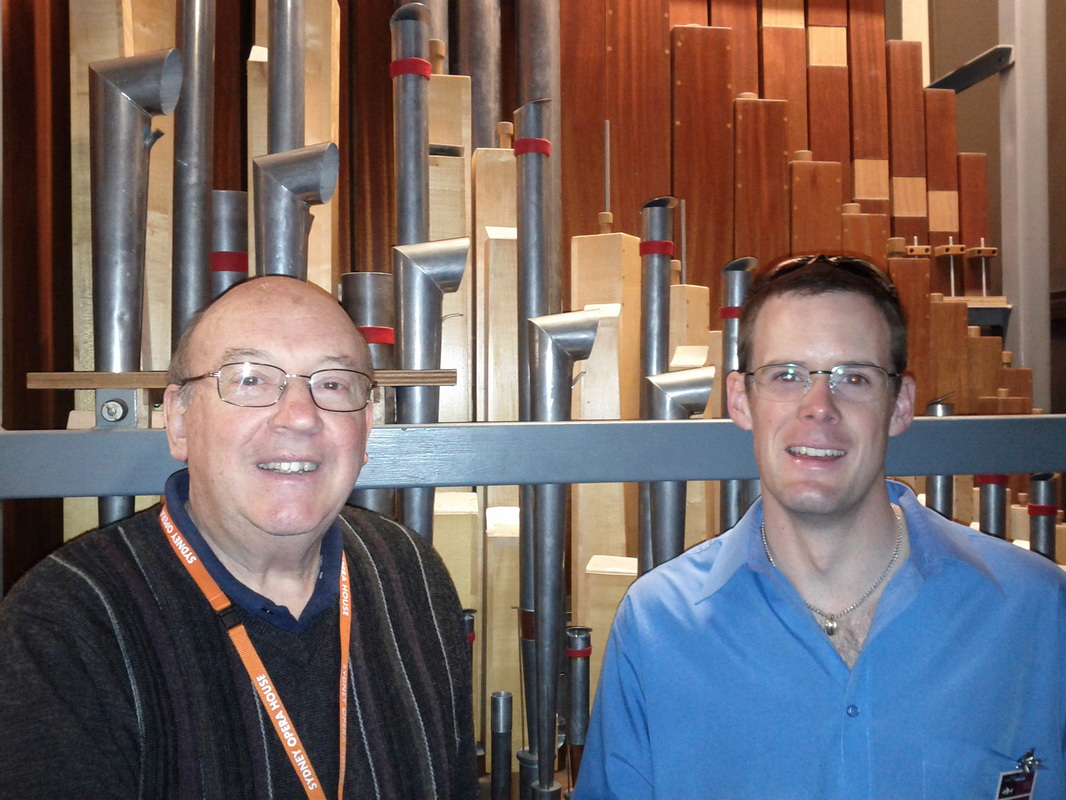 John Higgins (organist from Whyalla South Australia) and Mark Fisher curator of the Sydney Opera House Grand pipe organ, in New South Wales, Australia, inside the organ chamber. The organ was built by Ronald Sharp and completed in 1979, consisting of six divisions (five manuals and pedalboard) and is the largest tracker action pipe organ ever build. The organ is considered to be in the baroque style and has 131 speaking stops and 200 ranks totaling 10,154 pipes. The organ also has an electronic capture and playback system, enabling the organist to listen to their rehearsals from different locations in the concert hall. Some of my readers might remember my Veni Creator Spiritus Op. 1 for organ (2007). Yesterday I shortened it a little and arranged for mixed choir and organ so that organists having a choir could sing it.
How did Italian late Renaissance and early Baroque organ composers play scales? Certainly not using modern fingering, like 1-2-3-1-2-3-4-5. They applied a system today known as Paired Fingering. In various European Baroque organ schools it was different from country to country.
In Italy it basically meant, that accented notes on the beat should be played with the "good" fingers 2 and 4 in each hand. This way the scale could look like 2-3-4-3-4-3-4-3-4 (r.h. ascending or l. h. descending) or 4-3-2-3-2-3-2-3-2 (r.h. descending or l. h ascending). Such a piece is for today's sight-reading: Intonazione del Primo Tono (p. 3) by the Venetian organist and composer Andrea Gabrieli (1532-1585) from the collection of various Italian, German, Dutch and English authors of the day "Liber Fratrum Cruciferorum Leodiensium" (1617 or before). Intonations were used to introduce the mode prior to the choral composition. The piece in the first tone basically consists of the mode of D (Dorian) with the excursions to the mode of a (3-2-2), F (3-3-4), and d (3-5-1). As usual, there is a plagal extension at the end (line 6). Play this piece with paired fingering as described above using articulate legato touch. Notice how the alternation of "good" and "bad" fingers create gentle accents on the stronger notes. Keep your fingers in contact with the keys at all times and play on the edge of the keys. When you have a three-voice composition for manuals only, such as a chorale prelude or a fugue, the middle part sometimes is written closer to the soprano and sometimes - closer to the bass. Therefore, this voice migrates from one hand to another and sometimes it needs to be played either by the left hand or the right hand.
In the legato style piece, this is not easy to do - you have to apply smooth fingering and see that the middle part remains fluent and melodically as well as rhythmically intact. Such a piece is for today's sight-reading: the famous Schmucke dich, o liebe Seele, Op. 122, No. 5 (1896) by Johannes Brahms (1833-1897), a 19th century late Romantic master German composer. Interestingly, such a sweet piece (p. 18), along with other 10 beautiful chorale preludes have been composed just one year before composer's death. The unit value (the most frequently seen rhythmical value) in this piece is a sixteenth note. Therefore, shorten the repeated notes in the upper voice with the chorale tune by the sixteenth note making them dotted eighth notes and sixteenth note rests. If three highly independent lines are too complex for you to play them together right away, play separate voices only in a slow tempo (especially this middle part). Watch out that all the parts would be played in a smooth legato. For this to happen, apply finger substitution. 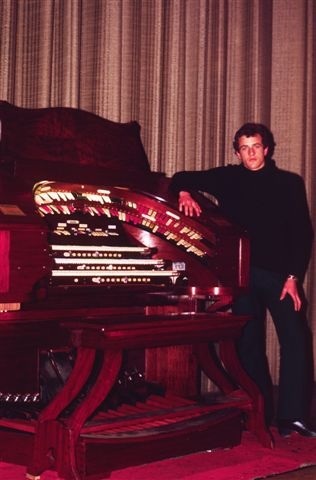 Russ Bonser: This photo was taken when I was 17 years of age at a theatre in Melbourne Australia. It was a restored Wurlitzer organ built in 1928. It used to elevate out of the floor and was played before and at theatre intervals. It was also used in the occasional concert. This was my first introduction to pipe organs. Composers who lived after Johann Sebastian Bach sometimes wanted to pay tribute to the great Master and used his ideas (harmonic, melodic, rhythmical or polyphonic) in their pieces. Another way to imprint his legacy for future generations is to use his name directly in composition. It all started with Bach himself, of course, most notably in the last Contrapunctus of the Art of Fugue, among other cases.
The thing is, that these four letters B-A-C-H (in German B means Bb and H - the note B) could serve very well as a subject for a fugue. They form chromatic ascending sequence, they can be inverted, diminished, augmented, played in canon, harmonized in multiple ways and put into various voices in various keys. Such a piece for today's sight-reading exercise is the Chromatic Fugue on BACH by Johann Christian Bach (1735-1782) who was the youngest son of Johann Sebastian. It could be performed equally well on the piano or the organ since it doesn't have any pedal part. Play this fugue very slowly because it is extremely chromatic. Aim for articulate legato touch. Interestingly, the piece is written in F major, but the cadence on page 3 is in C minor (half authentic cadence). This fugue will challenge your harmonic skills as well because these sequences will take you to some wild keys.  Ed Ackermann: Photo of members of Fort worth Chapter of the American Guild of Organists, March 15, 2014, in front of the grand Richards, Fowkes & Company (located in Tennessee, USA) organ at Church of Transfiguration (Episcopal) Church in Dallas, Texas, USA. As part of our individual practice sessions, I organized an organ crawl to several large tracker organs in Dallas for our Fort Worth members to play and experience the difference in playing a score on a tracker rather than the non-tracker pipe organs that are abundant in Fort Worth. Most had never played a tracker and were amazed at the difference in various aspects of playing a score. Pedal trills are quite difficult to execute with one foot - the ankle tenses and the motion becomes jerky. Master French organist and composer Marcel Dupre is known to have said that the secret of the perfect pedal technique is the flexibility of an ankle. This remark is also valid for the trills on the pedals.
So how do you develop this flexibility? Of course, practicing pedal scales and arpeggios in all keys over one and two octaves. Also today's exercise in sight-reading will help you do that. That's Etude No. 1 from 12 Etudes for Solo Pedals (ca. 1865) by the Romantic French composer Charles-Valentine Alkan (1813-1888). Besides the trills, in this etude you will find ascending and descending arpeggio figures. For the sake of safety, please wear organ shoes with heels while playing it. Take an extremely slow tempo and aim for the nice legato touch. Don't forget to change position in extreme edges of the pedal board by pushing off the opposite foot. Curiously, the pedal part in the fourth line descends to low B. On modern organs, play measures 2 and 3 of this line one octave higher.  Vidas Pinkevicius: After yesterday's recital "Lithuanian Organ Music" dedicated to the 25th anniversary of the Baltic Way. On August 23, 1989 millions of people from the 3 Baltic states stood on the highways connecting Vilnius, Riga and Tallinn holding hands to show the unity of the Baltic people in their peaceful resolve to become independent from the Soviet Union. In the background you can see the famous Gediminas Castle which is the symbol of Vilnius, capital of Lithuania. That day the castle was covered by the the flag colors of Lithuania, Latvia, and Estonia (3 colors each). One of the most fascinating aspects of French Classical organ school is their ornaments. These ornaments, if performed right, add tremendously to the overall impact of the music. Without them, the music is much less interesting.
Today's piece for sight-reading is Fugue Grave (p. 4) from 5 Fugues et un Quatuor sur le Kyrie (1689) by Jean-Henry d'Anglebert (1629-1691). It's a four-voice fugue in the French tradition which normally didn't have any circle of fifth sequences. If you want to play the ornaments the right way, look at page 3 of this edition, where you will find the table of ornaments and their execution. As I played it this afternoon, I noticed right away that the most difficult ornaments to execute are in the middle parts (alto and tenor). The outer part (soprano and bass) are not easy, either. As you are focusing on these ornaments, don't forget to use articulate legato as people tend to forget it in difficult situations. Beginners can practice separate parts of this fugue. How did the Italian Romantic composers portray prayer in music? What kind of musical elements were the most characteristic when depicting the feeling of contemplation and meditation?
First of all, tempo had to be moderate to slow with no virtuoso or dance elements. Rhythms which evoked very dramatic emotions, sudden action, such as sharp dotted rhythms or figura corta (eighth note and two sixteenths) were not used in such pieces. Melody had to be singable without any association with instrumental music. Phrasing was largely natural which often subdivided the piece into symmetrical units. Harmony was used quite colorful with nice modulations, chromatic chords and sequences as well as frequent major-minor mode borrowings. Registration and dynamics focused on soft to medium sounds (strings, flutes, perhaps one or two principals, sometimes a soft reed). Such a piece for today's sight-reading is Elevazione (p. 3), Op. 120, No. 2 by Luigi Bottazzo (1845-1924), a Romantic Italian organist and composer. This piece was intended to be performed for Elevation section of the Mass (in those days, organist played organ music during Elevation (after the Benedictus). By the way, this composition is a wonderful exercise for the use of the swell pedal (for the right foot). In places where there are crescendo and diminuendo markings, avoid playing the bass part with the right foot. Observe that the swell motion is gentle and natural enough without too sudden and too powerful changes in dynamics. On modern organs, Italian Organo Espressivo could mean Swell and Grand Organo - Great. In music, composers frequently imitate sounds of nature. Some of the most popular ones are the sounds of a cuckoo and hunting. If you have ever heard live cuckoo singing, you will immediately recognize the intervals of minor third in descending motion.
By the way, in my country, there's a saying that in the spring, when you first hear this bird singing, and you have some coins in your pocket, this year is going to be financially successful for you. This saying obviously originated BEFORE credit cards and PayPal, though. How cuckoo deals with the advancement of technology, I do not know yet. Another saying about the cuckoo is that you should count the number she sings her minor third interval. This will indicate the number of years you are going to live... Another sound frequently imitated is the hunting signal symbolized by the hunting horn. Since the horn didn't have valves until the 19th century, it could only play the natural overtone or harmonic series affected entirely by the lips (from C: C-C-G-C-E-G etc.). In orchestras, very often these natural hunting sounds would be played by the pair of two French horns. Today's piece for sight-reading is Voluntary I from 10 Voluntaries for Organ or Harpsichord (1758) by John Bennett (1730-1784), English Baroque organist and composer. Here is the score for playing. You can hear the sounds of the cuckoo in m. 164-182 and the hunting horn in Trumpet and echo passages throughout the 2/2 section. Although the meter is either 3/2 or 2/2, I recommend you play slowly and count in quarter notes for accuracy. |
DON'T MISS A THING! FREE UPDATES BY EMAIL.Thank you!You have successfully joined our subscriber list.  Photo by Edgaras Kurauskas Photo by Edgaras Kurauskas
Authors
Drs. Vidas Pinkevicius and Ausra Motuzaite-Pinkeviciene Organists of Vilnius University , creators of Secrets of Organ Playing. Our Hauptwerk Setup:
Categories
All
Archives
July 2024
|
This site participates in the Amazon, Thomann and other affiliate programs, the proceeds of which keep it free for anyone to read.
Copyright © 2011-2024 by Vidas Pinkevicius and Ausra Motuzaite-Pinkeviciene.
Terms of Service and Privacy Policy
Copyright © 2011-2024 by Vidas Pinkevicius and Ausra Motuzaite-Pinkeviciene.
Terms of Service and Privacy Policy

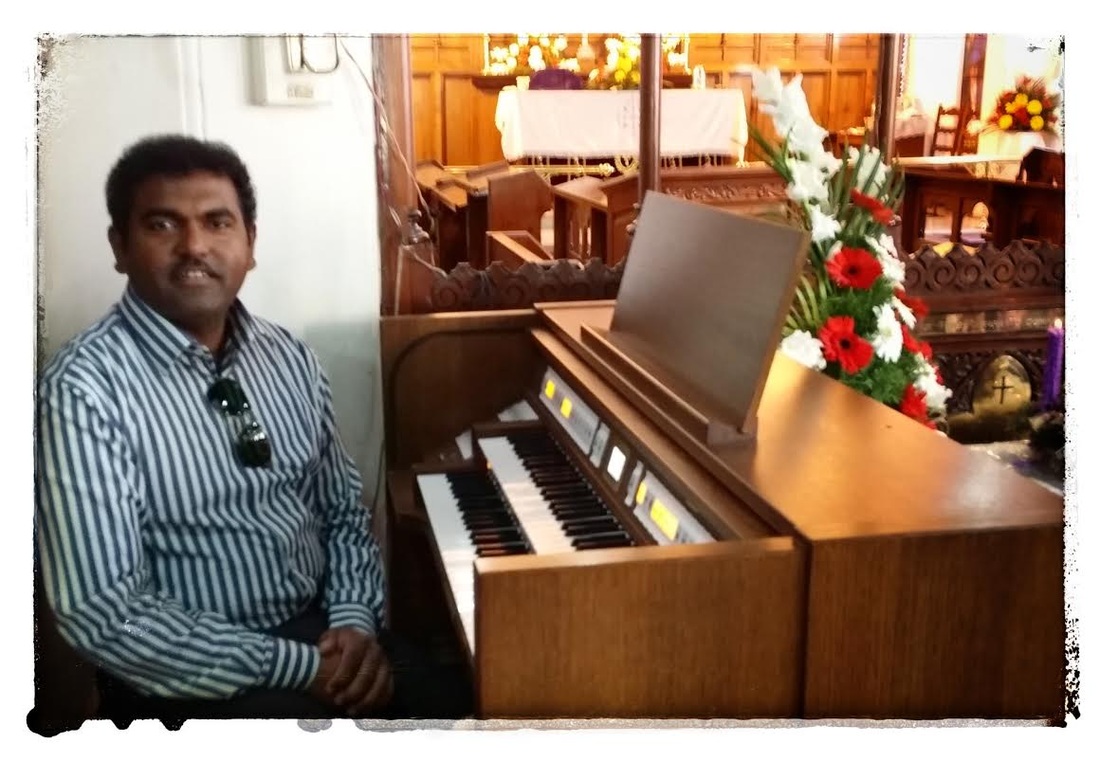
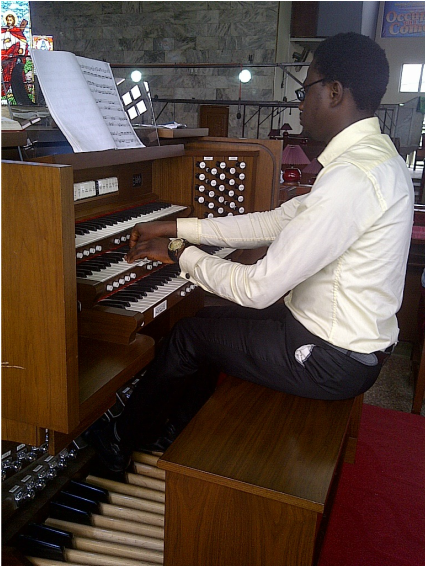

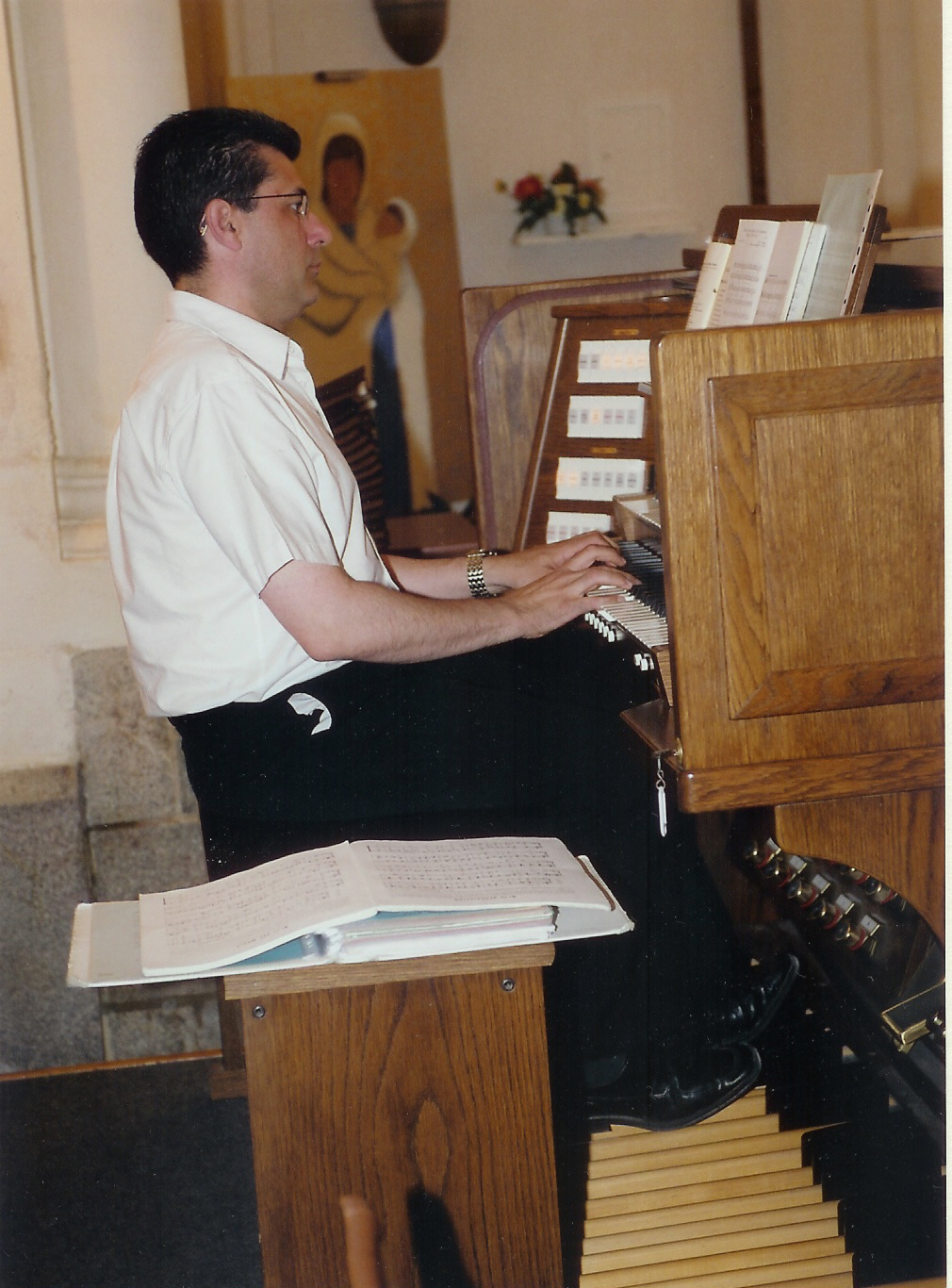





 RSS Feed
RSS Feed